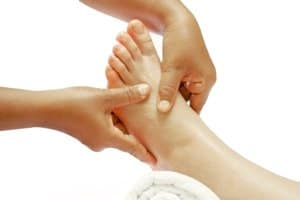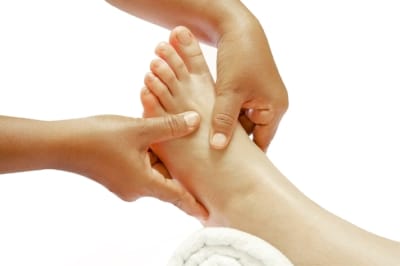

Pain in the top of the foot when standing or walking? You may have a stress fracture, Pittsburgh!
Stress Fracture of the Foot
Being on your feet all day, places stress on the bones of the foot. Sometimes forces are repetitive, and beyond what the bones of the foot can withstand. This is when damage to the bone gradually occurs. At first pain may come and go with activity. If left to go on long enough, a stress fracture can occur
Causes of a stress fracture of the foot
 A stress fracture of the foot may occur slowly, over time, with an increase in normal activity or working on a haqrd surface. They often occur in the spring, after sitting all winter and you may start a new walking program when the weather turns nice, or you go outside and work on ladders, or cut grass. A third common aggravating factor is a jump or fall from a height, or running.https://bvfootclinic.com/fractures/
A stress fracture of the foot may occur slowly, over time, with an increase in normal activity or working on a haqrd surface. They often occur in the spring, after sitting all winter and you may start a new walking program when the weather turns nice, or you go outside and work on ladders, or cut grass. A third common aggravating factor is a jump or fall from a height, or running.https://bvfootclinic.com/fractures/
Signs and symptoms of a stress fracture of the foot
Localized pain in the foot, usually pain on the top of the foot (over the metatarsal area) that increases with activity and decreases with rest, is the number one symptom of a stress fracture. As symptoms worsen, you may even start to limp during your work or other activity and may have to stop and rest due to pain.
Local swelling, when compared to your other foot, is also a common sign of stress fractures.
Diagnosis of a stress fracture of the foot
Your local podiatrist in Center Twp, PA can help determine if you have a astress fracture or not. Xrays may hint at a problem, but are not always sensitive. A thorough clinical exam by your local podiatrist, Pittsburgh, often best helps you determine if this is your problem, and how to correct it
Prognosis of a stress fracture of the foot
It is possible to completely heal a stress fracture, but it often take up to 16 weeks, or even longer. With proper treatment, the pain can often be gotten under control in 2 weeks or so. Immobilization is key and prevention going forward will keep it from returning as soon as you resume activity.
Treatment for a stress fracture of the foot
At Beaver Valley Foot Clinic, we offer you many personalized options based on your job requirements, body limitations like sore hips or knees, and comfort. Orthotics or arch supports after treatment are important to prevent recurrence.
How can one prevent stress fractures?
Preventing stress fractures requires a combination of proper training, lifestyle adjustments, and supportive measures. Here are several strategies to help prevent stress fractures:
- Gradual progression
Avoid sudden increases in intensity, duration, or frequency of physical activity. Gradually progress your training to allow your bones and muscles to adapt and become stronger.
- Proper footwear
Wear appropriate footwear that provides adequate support and cushioning for your chosen activity. Replace worn-out shoes regularly to maintain optimal shock absorption.
- Surface selection
If possible, choose exercise surfaces that are shock-absorbing, such as grass or rubberized tracks. Avoid hard or uneven surfaces that can increase stress on your bones.
- Cross-training
Incorporate cross-training activities into your routine. This helps distribute the workload across different muscles and bones, reducing the risk of overuse injuries.
- Strength and flexibility training
Develop strong muscles and improve flexibility to better support your bones during physical activity. Focus on exercises that target the muscles surrounding the affected area to provide additional stability.
- Proper nutrition:
Maintain a balanced diet rich in calcium, vitamin D, and other essential nutrients that support bone health. Consult with a healthcare professional or a registered dietitian to ensure you’re meeting your nutritional needs.
- Listen to your body
Pay attention to any signs of pain or discomfort during exercise. If you experience persistent pain, rest and allow your body to recover. Ignoring warning signs may lead to more serious injuries.
- Rest and recovery
Incorporate regular rest days into your training schedule to allow your body time to repair and adapt. Get sufficient sleep to promote overall recovery and muscle regeneration.
- Consult a professional
If you’re starting a new exercise program, working with a qualified coach or trainer can help ensure proper technique, form, and progression.
